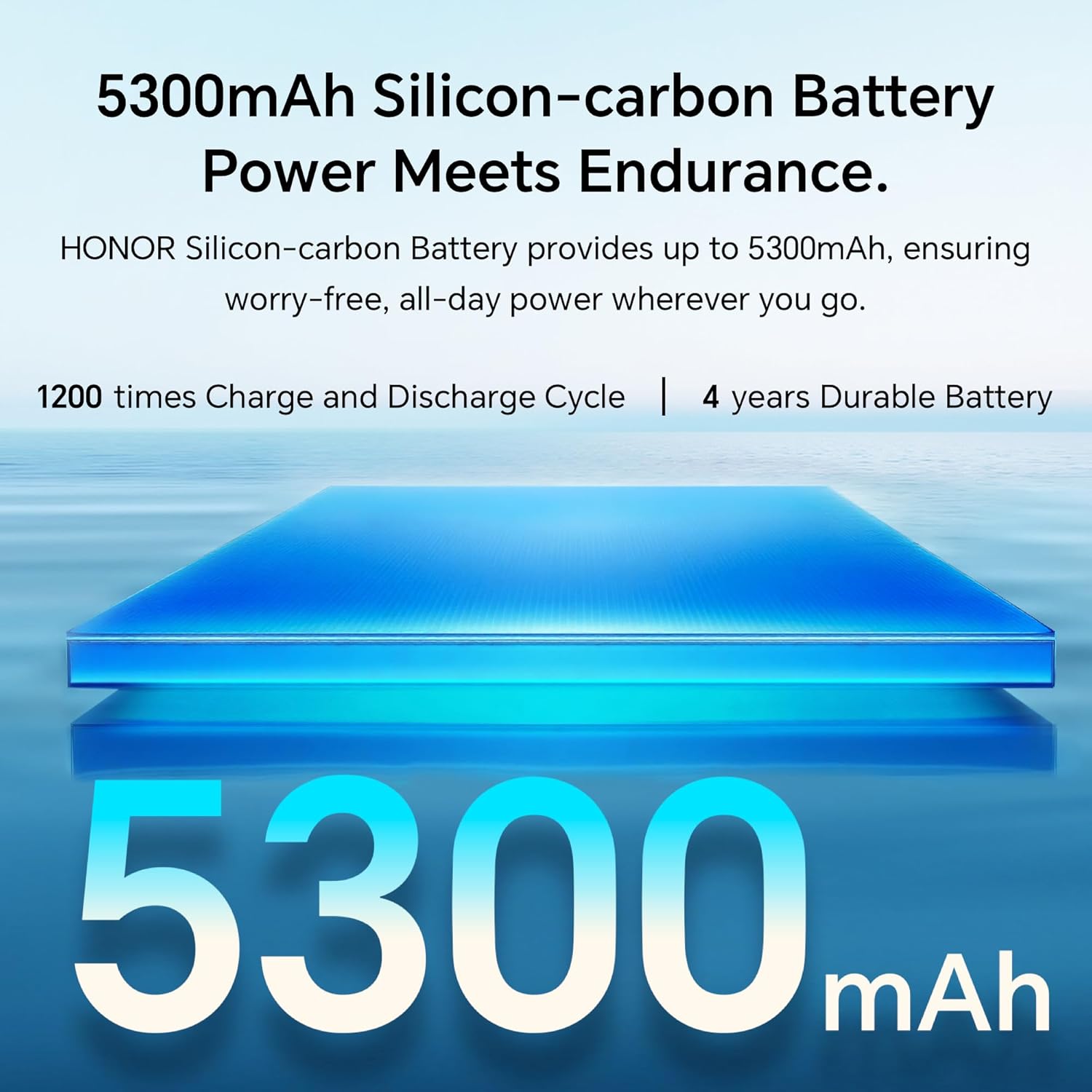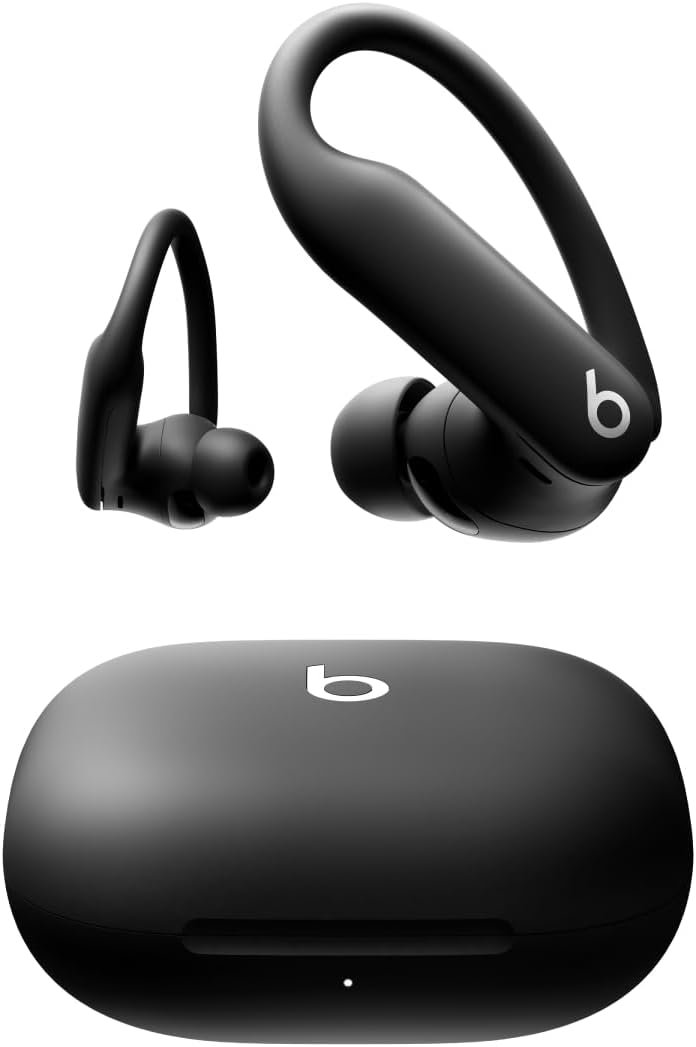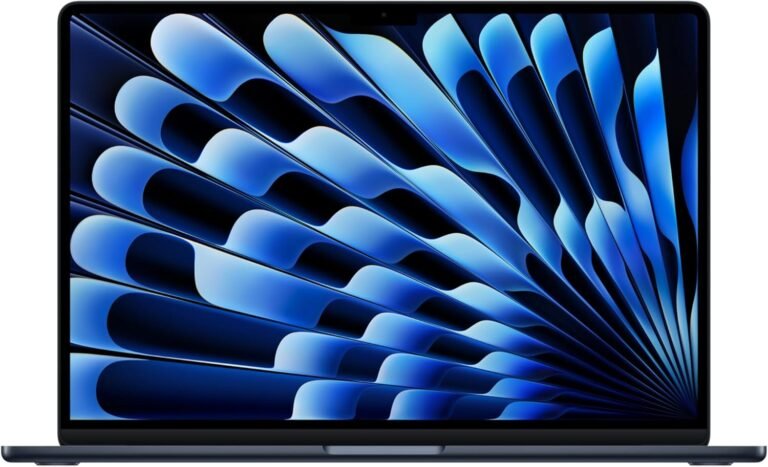This Honor 400 vs Honor 400 Pro review delves into a comprehensive comparison of two closely related smartphones, examining their key features and specifications to highlight their distinct offerings. The Honor 400 series has been unveiled as a new lineup promising advanced AI imaging, flagship-level specifications, and notable durability. This analysis aims to dissect the standard Honor 400 and its more premium sibling, the Honor 400 Pro, to clarify their respective positions in the market. The introduction of a “series” typically implies a tiered approach, with the “Pro” model expected to deliver tangible enhancements over the standard version. This review will scrutinize whether the “Pro” designation is justified by substantial differentiation in features and performance.
Specifications at a Glance: Honor 400 vs Honor 400 Pro
A side-by-side comparison provides an immediate overview of the core hardware differences and similarities between the Honor 400 and Honor 400 Pro. This table serves as a foundational reference for the detailed analysis that follows.
| Feature | Honor 400 | Honor 400 Pro |
|---|---|---|
| Display Size | 6.55 inches | 6.7 inches |
| Display Resolution | 2736×1264 pixels (or 1264×2736) | 2800×1280 pixels |
| Display Type | AMOLED, 120Hz, 5000 nits peak HDR brightness | AMOLED/OLED, 120Hz, 5000 nits peak HDR brightness |
| Processor | Qualcomm Snapdragon 7 Gen 3 | Qualcomm Snapdragon 8 Gen 3 |
| RAM (Physical) | 8GB / 12GB | 12GB |
| Storage Options | 256GB / 512GB | Up to 512GB |
| Rear Camera (Main) | 200MP, f/1.9, OIS, 1/1.4″ sensor | 200MP, f/1.9, OIS, 1/1.4″ sensor |
| Rear Camera (Ultrawide) | 12MP, f/2.2 | 12MP, f/2.2, AF (Macro) |
| Rear Camera (Telephoto) | None | 50MP, f/2.4, OIS, 3x optical zoom |
| Front Camera | 50MP, f/2.0 | 50MP, f/2.0 (possibly + 2MP depth) |
| Battery Capacity | 6000mAh (Global) / 5300mAh (UK/EU) | 6000mAh (Global) / 5300mAh (UK/EU) |
| Wired Charging | 66W (most common) / 80W / 100W | 100W |
| Wireless Charging | No | 50W |
| IP Rating | IP65 / IP66 | IP68 / IP69 |
| Dimensions (mm) | 156.5 x 74.6 x 7.3 | 160.8 x 76.1 x 8.1 |
| Weight | 184g | 205g |
| Operating System | Android 15, MagicOS 9.0 | Android 15, MagicOS 9.0 |
Design, Build, and Display Quality
The physical characteristics and display technologies of the Honor 400 and Honor 400 Pro reveal distinct design philosophies and target user preferences.
A. Physical Attributes and Ergonomics
The Honor 400 is presented as the more compact and lighter of the two devices. It features a 6.55 inch screen and measures 156.5 x 74.6 x 7.3 mm, weighing 184g. This construction, which includes a polycarbonate design for weight saving and a frosted texture back, aims for a comfortable in hand feel and enhanced pocketability. The Honor 400 also features flat sides. It is available in a wider array of colors, including Desert Gold, Meteor Silver, Midnight Black, and Tidal Blue.
In contrast, the Honor 400 Pro is larger and heavier, with a 6.7 inch screen, dimensions of 160.8mm x 76.1mm x 8.1mm, and a weight of 205g. It is described as a well built phone made of flagship grade materials, featuring curved front and back panels that contribute to a premium feel. Color options for the Pro model include Lunar Grey, Tidal Blue, and Midnight Black.
These differing approaches to design directly influence the user experience. The Honor 400’s lighter, more compact form with flat sides may appeal to users prioritizing ease of one handed use and a less obtrusive presence. The Honor 400 Pro’s use of more premium materials and curved aesthetics aims for a more luxurious and substantial feel, often associated with higher tier smartphones.

B. Water and Dust Resistance
A significant practical difference lies in the Ingress Protection (IP) ratings. The Honor 400 is generally cited with an IP65 rating, offering dust tight protection and resistance against low pressure water jets , though some sources mention IP66.
The Honor 400 Pro boasts a more robust IP68/IP69 rating. This signifies a higher level of protection against dust ingress and water submersion, including resistance to high pressure, high temperature water jets (IP69). This superior elemental protection on the Pro model offers greater peace of mind against accidental spills, rain, or even brief submersion, contributing to its “Pro” designation and enhancing its durability in varied environmental conditions.
C. Display Analysis
Both the Honor 400 and Honor 400 Pro feature high quality AMOLED or OLED displays. They share several key characteristics, including a peak HDR brightness of 5000 nits for excellent outdoor visibility and a 120Hz refresh rate for smooth scrolling and animations. Both panels also achieve a pixel density of approximately 460 ppi, ensuring sharp visuals. Furthermore, the series incorporates PWM (Pulse Width Modulation) dimming technology, with the Pro model specifically noted for 3840Hz PWM dimming, designed to reduce eye strain by minimizing flicker at lower brightness levels. This focus on eye comfort is a noteworthy aspect of the series’ display technology. The Honor 400 series also introduces a “Motion Sickness Relief display technology,” aimed at preventing nausea during screen use in moving vehicles.
The primary visual distinction is screen size and resolution. The Honor 400 has a 6.55 inch display with a resolution of 2736×1264 pixels (or 1264×2736). The Honor 400 Pro offers a slightly larger 6.7 inch display with a resolution of 2800×1280 pixels. While the Pro model provides more screen real estate, the fundamental display technologies and quality metrics are largely consistent. This suggests Honor’s commitment to a premium viewing experience across both models, with the choice largely boiling down to preference for screen size.
Performance Deep Dive: Processing Power and Memory
The internal hardware, particularly the chipset and memory configurations, marks one of the most significant areas of differentiation between the Honor 400 and Honor 400 Pro.
A. Chipset Comparison
The Honor 400 is powered by the Qualcomm Snapdragon 7 Gen 3 Mobile Platform, a 4 nm chipset, paired with an Adreno 720 GPU. This positions the standard model in the upper mid range segment, capable of delivering smooth performance for everyday tasks and moderate gaming.
The Honor 400 Pro, however, is equipped with the flagship tier Qualcomm Snapdragon 8 Gen 3 Mobile Platform, coupled with an Adreno 750 GPU. This chipset is designed for top tier performance, offering substantially higher CPU and GPU capabilities. This translates to faster app loading times, superior gaming performance with higher graphical settings, more efficient handling of demanding applications like video editing, and enhanced AI processing power. The performance gap between these two chipsets is considerable, directly influencing the target audience: the Pro model caters to power users, gamers, and those who demand the highest level of responsiveness, while the standard model serves users who require solid performance without necessarily needing cutting edge speed. The Honor 400, while capable for its class, may not sustain peak performance in very intensive games as effectively as its Pro counterpart.
B. RAM and Storage
Both smartphones offer generous RAM and storage configurations. The Honor 400 is available with up to 12GB of physical RAM, with an 8GB RAM option also listed, and storage options extending up to 512GB. The Honor 400 Pro typically comes with 12GB of physical RAM and up to 512GB of internal storage.
The series also features “HONOR Turbo RAM,” a virtual RAM expansion technology that allocates a portion of the phone’s storage to act as additional RAM. For instance, configurations mentioning 24GB RAM often refer to 12GB of physical RAM supplemented by 12GB of virtual RAM. While virtual RAM can assist in improving multitasking by allowing more apps to remain active in the background, it does not offer the same speed benefits as physical RAM. The standardization of 12GB physical RAM on the Pro model reinforces its premium positioning, providing ample memory for even the most demanding use cases. The standard model’s offering of both 8GB and 12GB physical RAM options provides more flexibility based on user needs and budget.
Camera Systems Compared: The 200MP Showdown and Pro’s Telephoto Edge
The camera systems on the Honor 400 and Honor 400 Pro share a high resolution main sensor but diverge significantly in telephoto capabilities and additional lens features.
A. Main 200MP Sensor
Both the Honor 400 and Honor 400 Pro are equipped with an impressive 200MP main camera. This sensor features a 1/1.4 inch size, an f/1.9 aperture, and Optical Image Stabilization (OIS). Some sources also mention dual OIS + EIS (Electronic Image Stabilization) for the series. This shared high resolution sensor establishes a strong photographic baseline for both phones. The large sensor size is beneficial for capturing more light, leading to better image quality, especially in challenging lighting conditions. OIS is crucial for minimizing blur from hand shake, resulting in sharper photos and smoother videos. While the sensor hardware is identical, the image processing capabilities, heavily influenced by the chipset’s Image Signal Processor (ISP), can lead to variations in final image output. The Snapdragon 8 Gen 3 in the Honor 400 Pro may offer more advanced noise reduction, dynamic range optimization, and color science, potentially yielding superior results in certain scenarios, as suggested by reviews praising the Pro’s main camera performance, particularly in handling scenes with high contrast.
B. Ultrawide Lens
Both models feature a 12MP ultrawide camera, typically with an f/2.2 aperture. This lens allows for capturing expansive scenes and creative perspectives. A key difference, however, is that the ultrawide lens on the Honor 400 Pro includes autofocus (AF). This addition allows the Pro’s ultrawide camera to double as a macro lens, capable of focusing on subjects at very close distances. This enhances the Pro’s camera versatility without requiring a separate, often lower quality, dedicated macro lens. The standard Honor 400’s ultrawide lens may lack this autofocus capability, limiting its close up focusing abilities.
C. Telephoto Lens: The Pro Exclusive
The presence of a dedicated telephoto lens is a major distinguishing factor for the Honor 400 Pro. It is equipped with a 50MP telephoto camera featuring OIS and providing 3x optical zoom, with an f/2.4 aperture and utilizing a Sony IMX856 sensor in some configurations. This dedicated optical zoom capability allows the Pro model to capture high quality zoomed in shots without the image degradation typically associated with digital zoom. OIS on the telephoto lens is particularly important for maintaining sharpness at longer focal lengths.
The Honor 400, in contrast, lacks a dedicated telephoto lens. It relies on digital zoom, likely by cropping from its high resolution 200MP main sensor. While a 200MP sensor offers considerable cropping potential, optical zoom will generally provide superior detail, clarity, and overall image quality at its native magnification. Some marketing materials mention an “industry first 30x telephoto on the standard model,” which most likely refers to AI assisted digital zoom rather than an optical lens. The dedicated telephoto lens significantly enhances the photographic versatility of the Honor 400 Pro, making it a more capable tool for users who frequently utilize zoom.
D. Front Camera
Both the Honor 400 and Honor 400 Pro appear to share a high resolution 50MP front facing camera, often with an f/2.0 aperture, designed for detailed selfies and video calls. Some specifications for the Honor 400 Pro suggest the inclusion of an additional 2MP depth sensor alongside the 50MP front camera. If this configuration is widespread, it could provide the Pro model with a slight edge in producing more accurate background blur for portrait mode selfies. One source lists a 16MP front camera for the Pro , but this appears to be an outlier given the consistent reporting of a 50MP sensor across multiple sources.
E. AI Imaging Features and Video
Artificial intelligence plays a central role in the imaging capabilities of the Honor 400 series. Both models run on Android 15 based MagicOS 9.0 and offer a suite of AI powered features, including AI Editing, AI Eraser, AI Outpainting, and AI Portrait Snap. A particularly highlighted feature is “AI Image to Video,” driven by Google’s Veo technology, which can transform still images into short, animated video clips. The series also incorporates an AI HONOR IMAGE ENGINE and features like AI Super Zoom, reportedly offering 15x to 50x zoom on the Pro and up to 30x on the standard model through AI enhancements.
Regarding video recording, the Honor 400 supports 4K and 1080p capture with gyro EIS and OIS. However, a notable omission for the standard model is the lack of 4K video recording at 60 frames per second (4K60). While not explicitly stated for the Pro model in all contexts, its flagship status and more powerful chipset make 4K60 support more probable. The advanced AI features are common to both, but the Snapdragon 8 Gen 3 in the Honor 400 Pro might execute these computationally intensive tasks more rapidly and efficiently.

Battery Endurance and Charging Speeds
Battery life and charging technologies are critical aspects of the smartphone experience, and the Honor 400 series addresses these with large capacities and fast charging options, albeit with some regional variations and differences between the models.
A. Battery Capacity
Both the Honor 400 and Honor 400 Pro are listed with a substantial 6,000mAh battery capacity in their global configurations. However, for versions sold in the UK and EU, this capacity is reduced to 5,300mAh due to shipping regulations or regional market decisions. This 5,300mAh silicon carbon battery is still a generous size, expected to provide ample endurance for a full day of typical use. The silicon carbon battery technology itself is noteworthy, with claims that it can maintain over 80% of its capacity even after four years of use and perform reliably in extreme temperatures down to -20°C. This suggests a focus on long term battery health and resilience.
B. Wired Charging
The Honor 400 Pro consistently supports 100W wired charging. This rapid charging technology allows for significant battery replenishment in a short amount of time, with some claims of reaching 44% charge in just 15 minutes.
For the standard Honor 400, there is some variation in reported wired charging speeds. The most frequently cited speed is 66W. However, some sources indicate 80W (particularly for the 6000mAh version) or even 100W, matching the Pro. This discrepancy might be linked to regional variations or the specific battery version (6000mAh vs 5300mAh). Regardless, the Pro model clearly offers faster and more consistent top tier wired charging. It is important to note that the necessary fast charger may need to be purchased separately for both models.
C. Wireless Charging
Wireless charging is a premium feature exclusive to the Honor 400 Pro. It supports 50W wireless charging, providing a convenient cable free method for topping up the battery. The standard Honor 400 does not offer wireless charging capabilities. This difference further distinguishes the Pro model as the more feature rich option.

Software: MagicOS 9.0 and AI Enhancements
Both the Honor 400 and Honor 400 Pro run on MagicOS 9.0, which is based on Android 15. A significant value proposition for the series is the promise of long term software support, with mentions of up to six major Android OS upgrades for the Honor 400 and a six year update promise for the Pro model. This commitment enhances the longevity and security of the devices.
The software experience is heavily infused with AI. Beyond the imaging features, MagicOS 9.0 on the Honor 400 series offers intelligent tools for productivity, such as AI Summary, AI Minutes, AI Format, and AI Correction. AI Translation supporting 14 languages and AI Live Translation for real time multilingual phone conversations are also included. The devices integrate Google’s Gemini AI assistant and feature on device AI Deepfake Detection technology for an added layer of security.
While the AI feature set is comprehensive and largely shared, the user experience might be affected by preinstalled applications. Some reviews note that the Honor 400 Pro comes with a number of third party apps like Temu and TikTok preinstalled, which can make the interface feel cluttered from the outset.
Key Differences Summarized
To quickly recap the most impactful distinctions between the Honor 400 and Honor 400 Pro, the following table highlights their critical differentiating factors:
| Feature | Honor 400 | Honor 400 Pro |
|---|---|---|
| Processor | Snapdragon 7 Gen 3 | Snapdragon 8 Gen 3 |
| Rear Telephoto Camera | None | 50MP, 3x Optical Zoom, OIS |
| Max Wired Charging | 66W (most common) | 100W |
| Wireless Charging | No | Yes, 50W |
| IP Rating | IP65 / IP66 | IP68 / IP69 |
| Dimensions/Weight | Thinner (7.3mm), Lighter (184g) | Thicker (8.1mm), Heavier (205g) |
Export to Sheets
The Honor 400 Pro clearly distinguishes itself with a more powerful chipset, a dedicated and versatile telephoto lens for superior zoom photography, faster wired charging, the inclusion of wireless charging, and a higher level of dust and water resistance.
Concluding Thoughts: Which Honor 400 Is for You?
The choice between the Honor 400 and Honor 400 Pro ultimately depends on individual priorities, desired features, and budget.
The Honor 400 Pro is geared towards users seeking a more premium and feature rich experience with fewer compromises. Its strengths lie in its superior performance delivered by the Snapdragon 8 Gen 3 chipset, making it ideal for demanding tasks and gaming. Its advanced camera versatility, highlighted by the dedicated 50MP 3x optical telephoto lens, offers significantly more photographic flexibility. Faster charging capabilities, including 100W wired and 50W wireless options, add considerable convenience. Furthermore, its higher IP68/IP69 rating provides enhanced durability and peace of mind. If cutting edge performance, maximum camera flexibility, the convenience of wireless charging, and robust elemental protection are paramount, the Honor 400 Pro is the compelling selection, provided the higher price point (around £699 or $899) aligns with the budget.
The Honor 400 presents a strong value proposition, offering many of the series’ highlights at a more accessible price (starting around £399 or $599). It retains the powerful 200MP main camera and the excellent display quality shared with the Pro model, ensuring a high quality core experience. Users will also benefit from substantial battery life and the comprehensive suite of AI features found across the series. Its more compact and lighter design may also appeal to those who prioritize in hand comfort and portability. This model is well suited for users who desire a capable modern smartphone with a great primary camera and advanced software features but do not necessarily require the absolute top tier processing power, the specialized telephoto lens, or wireless charging.
The decision hinges on a cost benefit analysis. The Honor 400 Pro offers tangible upgrades across several key areas, justifying its “Pro” moniker, but these enhancements come at a notable price premium. The standard Honor 400 delivers an impressive package for its segment, making many of the flagship series’ desirable features available to a broader audience.
Some of the links on this page are affiliate links, which means we may earn a small commission if you make a purchase through them at no extra cost to you. This helps support the site and allows us to keep bringing you tech reviews and comparisons. Thanks for your support!







